utkamandarinka/iStock/GettyImages
When you treat yourself and your family to shrimp, you want it at the peak of its flavor and texture. Shrimp tastes great hot or cold and needs very little spice or special handling. Shrimp's mild, slightly sweet flavor means it pairs well with nearly any fruit or vegetable. Shrimp go from freezer to table in far less time than any other meat, making them an excellent choice when scheduling dinner around family activities or a busy work schedule.
Boiling
Small to medium-sized shrimp take as little as three minutes to boil when fresh or when completely thawed. Large shrimp are ready in as little as five minutes and jumbo shrimp or prawns need just seven to eight minutes. Cooking them all the way through the night before could result in rubbery shrimp. You can blanch shrimp for one minute in boiling water as long as you drain and refrigerate them immediately. The next day, small to medium shrimp need to boil for just two minutes, large shrimp for four minutes, and jumbo shrimp or prawns for no more than seven minutes.
Broiling
Whether in the oven or on a grill, shrimp broil in 4 to 5 minutes, as long as they are fully thawed. Patting each shrimp dry and basting them all with olive oil or butter will ensure that they do not dry out while broiling. If you skewer them between chunks of onion, grape tomatoes and chunks of red and green bell pepper and grill or broil them in a single layer, 1/2-inch apart, for two minutes per side on high heat, it adds flavor. All you have to do the next day is plunge each broiled or grilled shrimp skewer into briskly boiling water for one minute, pat it dry and serve it immediately.
Sauteed Shrimp
Whether you use flour, corn meal, panko bread crumbs or coconut, coating shrimp before you saute gives them a delicious crunch. To keep that crunch intact, reheat breaded, sauteed shrimp the next day by grilling or broiling. Tyler Florence advises adding breaded shrimp to a preheated pan with melted butter and olive oil for just five minutes. tossing them until the outside is crispy. Removing the shrimp from the oil, placing them on a platter between loose layers of paper towel and refrigerating them immediately stops their internal heat from continuing to cook them. The next day, they need to broil for just long enough to brown the coating.
Shrimp Salad
Since it needs no reheating, you can make salad shrimp any time. You can boil, broil, saute or oven-bake small to medium shrimp for three minutes, large shrimp for five minutes and jumbo shrimp or prawns for seven to eight minutes. Once you remove their peels, you can toss them with chopped lettuce, scallions, diced bell pepper, cooked pasta and minced red or yellow onion. Cole slaw dressing, ranch dressing or sour cream all complement shrimp salad. A sprinkle of black pepper and a pinch of lemon peel or a teaspoon of lime juice complete the flavor explosion.
Related Articles

How to Fry Shrimp With Potato Starch

Jumbo Shrimp Nutritional Facts

How to Cook Shrimp With Butter
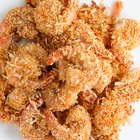
How to Make Coconut Shrimp
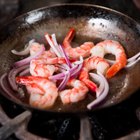
How to Cook Shrimp in a Skillet

How to Steam Shrimp in a Rice Cooker

How to Cook Alabama Red Shrimp

How to Cook Benihana Shrimp

Can I Bake Frozen Breaded Shrimp Rather ...

How to Prepare Pre Cooked Shrimp
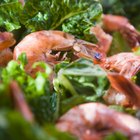
How to Cook Shrimp for Salad

How Do I Cook Live Shrimp?
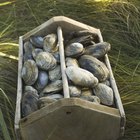
How to Cook Shucked Frozen Clams

How to Cook Frozen Jumbo Butterfly ...
How to Cook Shrimp Shish Kebabs in the ...

The Best Method for Cooking Shrimp
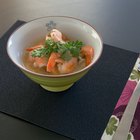
How to Cook Shrimp Scampi in a Crockpot
Do I Steam or Boil Shrimp?

How to Steam Lobster & Shrimp

How to Grill Tuna Steak
References
Writer Bio
Jane Smith has provided educational support, served people with multiple challenges, managed up to nine employees and 86 independent contractors at a time, rescued animals, designed and repaired household items and completed a three-year metalworking apprenticeship. Smith's book, "Giving Him the Blues," was published in 2008. Smith received a Bachelor of Science in education from Kent State University in 1995.